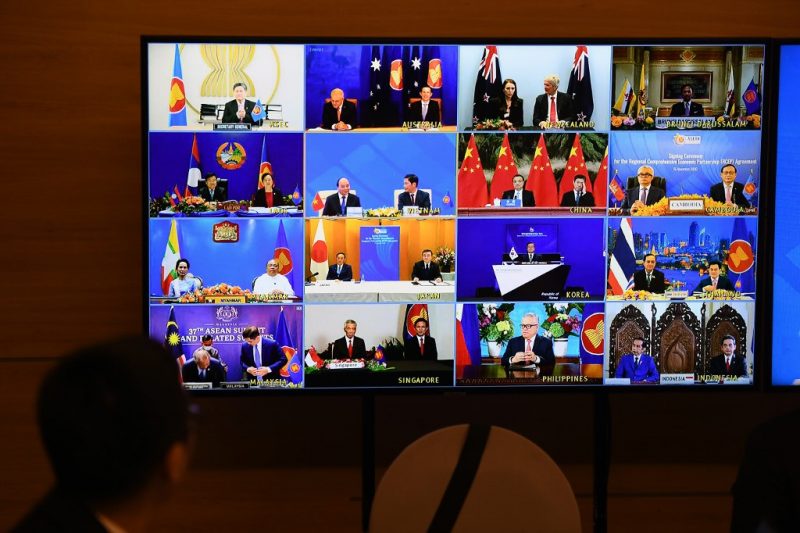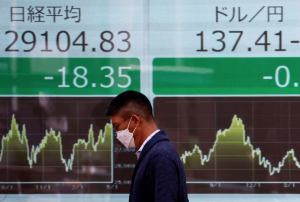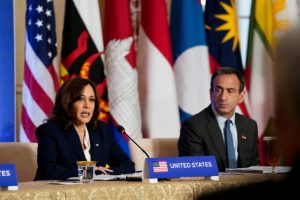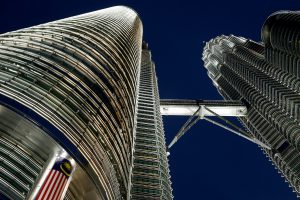(ATF) Flash back to 2005.
Brunei, Chile, New Zealand and Singapore signed a trade agreement. Unknown at the time, that was the genesis of the a much larger free-trade agreement. President George W. Bush announced in 2008 that the US would begin trade talks not just with this group, but with Australia, Vietnam and Peru. Canada, Japan, Malaysia and Mexico joined the table. The 12 countries beat major political hurdles and committed to economic reform.
The Trans-Pacific Partnership represented a triumph of free trade and economic growth.
It took almost 20 rounds of negotiations and many separate meetings before the participating countries reached an agreement in 2015. The pact was signed in 2016.
But the deal was never ratified by the US.
A deal 12 years in the making, involving three US Presidents, was formally killed by President Trump on his first day in Office. And President-elect Joe Biden is not going to try and raise the dead. The Democratic party of 2021 will simply not support it.
Fast-forward to 2020.
In mid-November, 15 countries signed the Regional Comprehensive Economic Partnership (RCEP). Those countries included members of the Association of Southeast Asian Nations (ASEAN) and five regional partners. The RCEP is probably the single-largest free-trade agreement in history. It may not be the most revolutionary – RCEP does not involve a massive shift in terms of tariff reductions, for example. But with a deal that will impact approximately 30% of the world’s population, it is clearly significant.
The RCEP is a Chinese-led deal.
It will help China strengthen its relations with neighbours, relations that were already deepening with the Belt and Road Initiative. China’s commitment to building infrastructure is part of a cohesive global growth strategy.
That contrasts with the US, with whom China is now a legitimate economic competitor and almost two thirds the size. In the US, global strategy appears to have been outsourced to US corporations with the government very much taking a back-seat role.
Regional leadership
China’s infrastructure building and regional leadership had already been aligning its neighbours closer to Beijing. China is the lead trade partner with more than 130 countries globally. The RCEP strengthens those ties. It will also broaden them. Importantly the RCEP does not cut off the rest of the world. The RCEP is not exclusive. New members can join. Existing members can sign trade deals and trade with non-members.
A world with the RCEP is a higher growth world.
Global trade growth has been slowing for some time. Protectionism has been increasing. RCEP represents an opportunity for more trade and more growth. The world is better off with it.
China’s economy will benefit from that.
China’s economy is already riding a cyclical recovery that looks likely to strengthen. Growth recovered quickly from the pandemic recession. Policy is geared towards preventing further widespread outbreaks of the virus and supporting economic activity.
Read Related Stories on ATF
- Belt and Road projects still holding up, says China
- Why Taiwan is booming as the world economy sinks
- Australia and South Korea team up on rare earth production
- The new Sino-US order
The recent plenum focused both on supporting economic growth and improving the quality of that growth. China’s authorities also continued the trend of financial market liberalisation. That is going to be key in attracting capital and improving the structural outlook for China’s economy.
The near-term and the medium-term outlooks are positively aligned. Not just for China but for emerging markets, particularly Asia.
A cyclical upturn is forming.
China is exposed to cyclical sectors – as is the broader emerging market.
President-elect Biden may be a return to more orthodox foreign policy. The reduction in uncertainty is a positive for trade-oriented EMs in the near-term. In the medium term, this is compounded by RCEP.
Global interest rates are staying low. Now, and for the next five years at least. This central bank liquidity support is a cyclical boon for China and EM.
The recent covid19 vaccine provides further cyclical certainty. And it allows us to look through the month-to-month news flow and focus on the medium-term.
The positive news is starting to be priced in markets. But there is further to go. China’s equity market remains attractive, even after the 2020 rally. Global investors are increasingly adding Chinese bonds and equities into their portfolios. Recent liberalisation reforms will only increase that.
And all of this is starting to be reflected in the strength of China’s currency.
But the medium-term tailwinds are vast. The CEP. Financial market liberalisation. Economic recovery. And that is the point. The yuan is appreciating now due to cyclical pressures. But this is a story that looks set to continue. The yuan could be one of the strongest appreciating currencies over not just the next year, but the next 10.
























